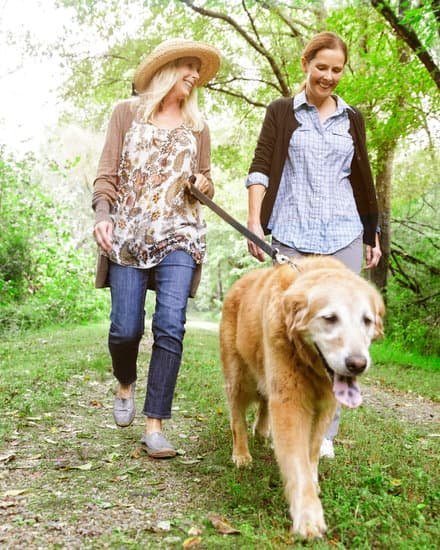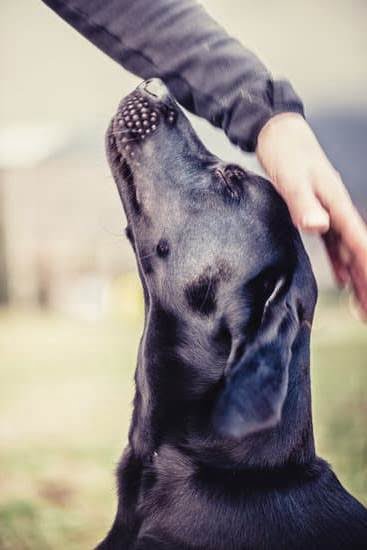Are you looking to improve your dog’s behavior and obedience? Look no further than training schools for dogs. Professional training for dogs offers a wide range of benefits, from improving their behavior to enhancing the bond between dogs and their owners. Proper training can make a significant difference in your dog’s life, and enrolling them in a reputable training school is the first step towards achieving that.
Choosing the right training school for your dog is crucial in ensuring they receive the best education and guidance. It’s important to look for certified trainers who use positive reinforcement techniques to teach and correct behaviors. The right training program can also cater to your specific needs, whether it’s obedience training, agility training, or behavior modification.
When it comes to dog training, there are different types of programs offered, each targeting specific skills and behaviors. From basic commands to advanced agility courses, these programs can help address common behavioral challenges such as aggression, separation anxiety, or leash pulling. Additionally, starting training at an early age can lead to more successful outcomes and prevent potential issues in the future.
How to Choose the Right Training School for Your Dog
When it comes to choosing the right training school for your dog, there are a few key factors to consider that can make all the difference in your dog’s training experience. Here are some tips on what to look for in a training school and why these elements are important for your dog’s development and well-being.
Certified Trainers
One of the most crucial aspects of selecting a training school is ensuring that the trainers are certified and experienced in working with dogs. Certified trainers have undergone extensive education and practical experience in animal behavior, learning theory, and teaching methods. This expertise allows them to tailor their approach to each individual dog, understanding their unique needs and creating effective training plans.
Positive Reinforcement Techniques
Another important factor to consider is the training methods used by the school. Positive reinforcement techniques, which involve rewarding desired behaviors with treats, praise, or toys, have been proven to be the most effective and humane way to train dogs. Avoid schools that use punitive methods or rely on outdated dominance-based approaches, as these can harm your dog’s well-being and hinder their progress.
Facility and Environment
The physical environment of the training school should also be taken into account. A well-maintained facility with clean and safe training areas is essential for creating a positive learning atmosphere for your dog. Additionally, consider how the school handles group classes or individual sessions, as some dogs may thrive in one setting over another.
By taking these considerations into account when choosing a training school for your dog, you can ensure that they receive the best possible care and instruction. Investing in professional training for your dog will not only enhance their behavior and obedience but also strengthen the bond between you and your furry companion.
Different Types of Training Programs Offered
When it comes to enrolling your dog in a training school, there are various types of training programs offered to cater to different needs and behaviors. These programs are designed to address specific skills and behaviors that can help your dog become well-behaved, obedient, and well-adjusted. Here are some of the different types of training programs you can consider for your furry friend:
- Obedience Training: This type of program focuses on teaching basic commands such as sit, stay, come, and heel. It also helps in improving leash manners and overall obedience.
- Agility Training: Agility training is more physically demanding and involves teaching dogs to navigate through obstacle courses. This type of training not only provides physical exercise but also helps in enhancing the bond between you and your dog.
- Behavior Modification: For dogs with specific behavioral issues such as aggression, anxiety, or fearfulness, behavior modification programs are tailored to address these challenges and help your dog overcome them.
Each training program targets specific skills and behaviors while incorporating positive reinforcement techniques that encourage good behavior. When choosing a training school for your dog, it’s important to inquire about the availability of these types of programs and assess which one would best suit your dog’s needs.
It’s worth noting that some training schools for dogs offer customized packages that combine elements from different programs based on the individual needs of each dog. Whether your dog requires basic obedience training or has more complex behavioral issues, there’s likely a program out there that can cater to their specific needs.
The Ideal Age to Start Training
When considering enrolling your dog in a training program, it is essential to understand that puppies as young as 8 weeks old can already begin learning basic commands and behaviors. In fact, early socialization and exposure to different environments at this stage can significantly impact their overall development and adaptability. For older dogs, training schools offer tailored programs that address behaviors specific to their age and experience, proving that it is never too late to start the training process.
Here are a few key points to consider when determining the ideal age to start training:
- Puppies between 8-16 weeks old are at an optimal age for socialization and basic obedience training.
- For older dogs, proper introduction and acclimation to the training environment are crucial before introducing more advanced techniques.
- Training schools for dogs offer specialized programs designed for different age groups, ensuring that all dogs receive appropriate guidance regardless of their age or previous experience.
Success Stories From Training Schools
Transforming Anxious Behavior
One success story from a training school for dogs involves a canine who suffered from severe separation anxiety. The dog, named Max, would exhibit destructive behavior and incessant barking whenever his owner left the house. After enrolling in a specialized training program, Max was able to learn coping mechanisms and gradually overcome his anxiety. Through positive reinforcement techniques and consistent training, Max’s behavior improved significantly, bringing peace of mind to both himself and his owner.
Improving Obedience and Socialization
Another remarkable success story comes from a dog who struggled with obedience and socialization. Bailey, a young Labrador Retriever, exhibited unruly behavior and was often unable to interact calmly with other dogs.
Enrolling in an obedience training program not only improved Bailey’s ability to follow commands but also taught him how to socialize effectively with other canines. This transformation not only made life easier for Bailey’s owner but also enhanced the dog’s overall quality of life through newfound confidence and companionship.
Overcoming Aggression
One particularly inspiring success story comes from a training school that specializes in addressing aggressive behavior in dogs. Rex, a powerful breed known for its protective instincts, had developed dangerous aggression towards strangers.
With the help of certified trainers at the training school, Rex underwent behavior modification techniques that focused on deescalating his aggressive tendencies through positive reinforcement. Over time, he became more relaxed and comfortable around unfamiliar people, ultimately leading to a safer and happier environment for both Rex and his family.
Training schools for dogs have proven to be instrumental in achieving positive transformations in behavior and overall well-being for countless canines like Max, Bailey, Rex, and many others. These success stories serve as testimony to the impactful benefits of professional training programs on the lives of dogs and their owners alike.
Common Challenges in Dog Training
Training schools for dogs can be incredibly beneficial, but they also come with their fair share of challenges. One of the most common challenges that dog owners may face when enrolling their pets in a training program is addressing various behavioral issues. These can include aggression towards other animals or humans, separation anxiety, and leash pulling. It’s essential for dog trainers to understand these challenges and work with both the dog and its owner to find effective solutions.
Aggression is a significant concern for many dog owners, and it can manifest in various ways, such as growling, biting, or snapping. Separation anxiety is another challenge that many dogs face when separated from their owners, leading to destructive behavior or excessive barking.
Additionally, leash pulling can make walks unpleasant and difficult to manage. A good training school should have experienced trainers who are equipped to handle these behavioral issues using positive reinforcement techniques and personalized strategies tailored to each dog’s specific needs.
In order to address these challenges effectively, it’s essential for dog trainers to work closely with the pet owner. This partnership ensures that the training techniques being used in the school are reinforced at home and integrated into the dog’s daily routine. Communication between the trainer and owner is crucial in understanding the underlying causes of these behavioral challenges and implementing consistent strategies to address them.
| Common Challenges | Effective Strategies |
|---|---|
| Aggression | Positive reinforcement techniques tailored to each dog’s specific needs |
| Separation Anxiety | Working with both the dog and owner to develop consistent strategies for handling separation |
| Leash Pulling | Implementing positive reinforcement methods during walks and teaching proper leash manners |
The Role of the Owner in Dog Training
Dog training schools play a crucial role in shaping a dog’s behavior and obedience, but the involvement of the owner is equally important in ensuring the success of the training. Owners must understand that their active participation and consistent reinforcement of training techniques at home are essential for their dog’s development.
This section will emphasize the role of the owner in dog training and provide advice on how owners can effectively support and reinforce the training received at a professional school.
Owners should actively participate in their dog’s training sessions at the school to better understand the commands, techniques, and methods being used. This will enable them to effectively reinforce these techniques at home and ensure consistency in their dog’s learning. Additionally, owners should consistently practice these techniques outside of formal training sessions to reinforce positive behaviors.
It is important for owners to maintain patience and consistency when reinforcing training at home. Dogs thrive on routine and respond well to consistent cues and commands. By maintaining patience and consistently reinforcing what they have learned at a training school, owners can help solidify their dog’s obedience and behavior in various environments.
| Role of Owner | Details |
|---|---|
| Participation in Training Sessions | Active participation enables better understanding of techniques |
| Consistent Reinforcement | Consistently practicing techniques outside formal sessions reinforces behaviors |
| Patience and Consistency | Dogs respond well to routine, so maintaining patience is key for successful reinforcement |
The Long-Term Benefits of Training for Dogs
In conclusion, enrolling your dog in a training school can have numerous long-term benefits for both the pet and its owner. Professional training is essential for shaping a well-behaved and obedient dog, as it provides the necessary skills and techniques to address behavioral issues effectively.
The impact of proper training on a dog’s behavior, socialization, and overall well-being cannot be understated. By investing in professional training, owners can ensure their dogs develop good manners, become well-adjusted pets, and enjoy a stronger bond with their human companions.
When choosing a training school for your dog, it is crucial to consider factors such as the qualifications of the trainers and the methods used during sessions. Look for certified trainers who utilize positive reinforcement techniques to create a safe and encouraging environment for dogs to learn and grow.
It’s important to understand that different types of training programs are available, including obedience training, agility training, and behavior modification. Each program targets specific skills and behaviors that cater to the unique needs of every individual dog.
Success stories from dogs who have completed training programs serve as testimonials to the effectiveness of professional dog training. These stories highlight the positive impact that proper training has had on the lives of both dogs and their owners.
Additionally, by starting training at an early age and actively involving themselves in the process, owners can ensure manageable behavior throughout their pet’s life. Ultimately, enrolling your dog in a reputable training school not only ensures better behavior but also creates a strong bond between you and your beloved pet.
Frequently Asked Questions
What Is the Best Age to Start Dog Training Classes?
The best age to start dog training classes is usually around 8-16 weeks old. This is the ideal time to start teaching basic commands and socialization skills, as puppies are more receptive to learning at this age.
What Is the Most Reputable Dog Training Certification?
The most reputable dog training certification can vary depending on where you are located. However, certifications from organizations such as the Certification Council for Professional Dog Trainers (CCPDT) and the International Association of Canine Professionals (IACP) are generally well-regarded in the industry.
What Are the 5 Golden Rules of Dog Training?
The 5 golden rules of dog training involve consistency, patience, positive reinforcement, clear communication, and understanding your dog’s individual needs. These principles help establish a strong bond between you and your pet while effectively shaping their behavior through training.

Welcome to the blog! I am a professional dog trainer and have been working with dogs for many years. In this blog, I will be discussing various topics related to dog training, including tips, tricks, and advice. I hope you find this information helpful and informative. Thanks for reading!





